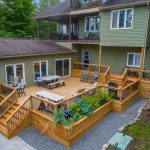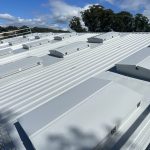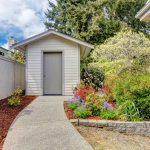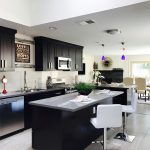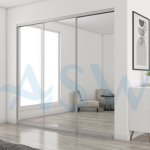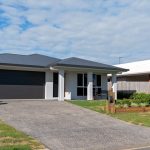Transform Your Backyard Shed Into a Stunning Multi-Purpose Retreat
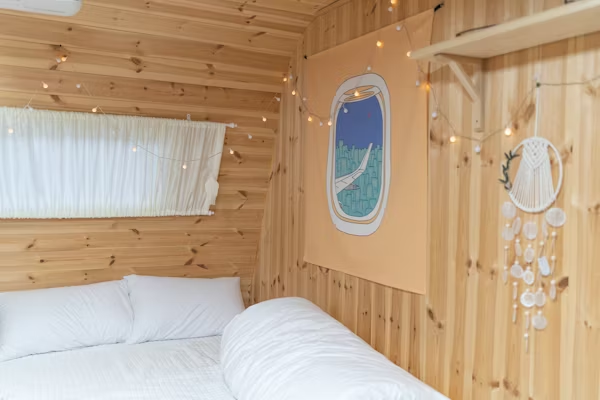
There’s something almost magical about a backyard shed. What starts as a simple storage solution often becomes the catalyst for something far more exciting—a creative studio, guest accommodation, home office, or entertainment hub. Across Brisbane and beyond, homeowners are discovering that their underutilized sheds hold incredible potential for transformation.
The beauty of shed conversions lies in their versatility. Unlike major home renovations that require extensive permits and massive budgets, transforming your shed offers a more approachable pathway to extra living space. Whether you’re looking to create a private sanctuary away from the main house, accommodate visiting family members, or simply carve out a dedicated space for hobbies and relaxation, your shed can become whatever you need it to be.
This comprehensive guide will walk you through the essential considerations for turning your ordinary shed into an extraordinary space. We’ll explore practical design strategies, furniture selection, accessibility features, and the clever touches that transform a basic structure into a welcoming environment. From sleeping quarters to socializing zones, you’ll discover how thoughtful planning and smart choices can maximize every square meter of your shed’s potential.
Assessing Your Shed’s Potential and Planning the Layout
Before diving into furniture catalogs and paint swatches, take time to honestly evaluate what you’re working with. Stand inside your shed on a typical day and observe how natural light enters, where the power outlets are located (or where they could be installed), and what structural limitations might influence your design.
The first critical decision revolves around your shed’s primary function. Will it serve as occasional guest accommodation? A dedicated workspace? Perhaps a combination retreat where you can work during the day and entertain in the evening? Your answer shapes everything that follows—from insulation requirements to furniture choices.
Temperature control deserves serious consideration, particularly in Queensland’s climate. A shed that’s sweltering in summer or freezing in winter won’t see much use regardless of how beautifully you furnish it. Proper insulation, ventilation, and perhaps a ceiling fan or split-system air conditioner can transform an uncomfortable space into a year-round haven.
Flooring often gets overlooked in shed conversion planning, yet it dramatically impacts both aesthetics and functionality. Existing concrete can work wonderfully with the right treatment—polished concrete has become increasingly popular for its industrial-chic appearance and easy maintenance. Alternatively, floating floorboards, vinyl planks, or even indoor-outdoor carpet tiles can warm up the space while hiding less-than-perfect subflooring.
Lighting strategy should blend natural and artificial sources. If your shed lacks windows, consider adding them or installing a skylight to reduce daytime electricity needs and create a more inviting atmosphere. For artificial lighting, layer your approach with ambient ceiling lights, task lighting for specific work areas, and accent lighting to highlight architectural features or create mood.
Creating Comfortable Sleeping Quarters in Your Converted Shed
If your shed conversion includes accommodation capabilities—whether for guests, teenagers seeking independence, or even as a personal retreat—thoughtful bedroom setup becomes paramount. The space might be compact, but that doesn’t mean it can’t be supremely comfortable and welcoming.
Furniture selection in smaller spaces requires strategic thinking. Every piece should earn its place through functionality, comfort, or aesthetic contribution. Opting for cheap bed frames Brisbane retailers offer doesn’t mean compromising on quality—many affordable options feature smart storage solutions like built-in drawers or hydraulic lift mechanisms that reveal hidden storage underneath. These dual-purpose designs prove invaluable when floor space comes at a premium.
Consider the bed’s footprint carefully. A queen bed might fit technically, but does it leave enough circulation space? Sometimes a double bed with clever styling and quality bedding creates a more luxurious feel than a cramped queen. Platform beds with low profiles can make ceilings feel higher, while beds with exposed legs create visual spaciousness by allowing sight lines to continue underneath.
Storage solutions extend beyond the bed itself. Vertical space becomes your best friend in shed conversions. Wall-mounted shelving, hooks for hanging items, and even ceiling-mounted storage can keep belongings organized without cluttering precious floor area. A compact wardrobe or armor with mirror doors serves double duty—providing essential storage while visually expanding the space through reflection.
Textile choices dramatically influence how cozy your sleeping quarters feel. Layered bedding with varying textures invites relaxation, while blackout curtains or blinds ensure quality sleep regardless of how early the sun rises. Consider adding a soft rug beside the bed to warm up hard flooring and provide a pleasant landing spot for feet on chilly mornings.
Personal touches transform a functional sleeping area into a genuine retreat. A small bedside table with a reading lamp, a carefully chosen piece of wall art, or even a compact bookshelf stocked with favorites creates the atmosphere of a boutique guesthouse rather than makeshift accommodation.
Designing an Entertainment Zone That Impresses
The most successful shed conversions include dedicated areas for socializing and relaxation. Whether you’re creating a space for quiet evening drinks, weekend gatherings with friends, or a private retreat for hobbies, thoughtful design elevates the experience from adequate to exceptional.
A bar area—even a modest one—instantly elevates your shed’s entertainment credentials. This doesn’t require extensive plumbing or massive budgets. A simple setup might include a compact bar cabinet or repurposed sideboard stocked with glassware and beverages, complemented by appropriate seating that encourages conversation and lingering.
Seating selection significantly impacts the atmosphere you create. Rattan bar stools bring organic warmth and textural interest to entertainment spaces while remaining practical for varying weather conditions common in shed environments. Their natural aesthetic works beautifully whether your design leans toward coastal casual, bohemian eclectic, or modern farmhouse. The breathable nature of rattan also ensures comfortable seating even during warmer months when air conditioning might not be running.
Height considerations matter when selecting bar stools. Standard bar height (approximately 100-110cm) suits traditional bar counters, while counter height (approximately 85-95cm) works better for kitchen island-style setups or lower surfaces. Ensure at least 25-30cm clearance between the stool seat and counter for comfortable leg room.
Beyond the bar itself, consider how people will circulate through your entertainment space. Arrange furniture to encourage conversation—facing seating toward each other rather than all pointing toward walls. Small occasional tables positioned within easy reach of seating eliminate the awkward balancing act of holding drinks while chatting.
Ambiance makes or breaks an entertainment space. Dimmable lighting gives you control over mood—brighter for game nights or projects, softer for intimate gatherings. String lights draped across ceilings or wound through exposed beams add whimsy and warmth without requiring electrical work. Bluetooth speakers discreetly placed ensure music without dominating precious surface area.
Consider adding a small refrigerator if your budget allows. Nothing disrupts the flow of entertainment like constant trips back to the main house for cold drinks. Compact bar fridges have become increasingly affordable and energy-efficient, and they’re perfect for sheds where space remains tight.
Temperature control takes on added importance in entertainment spaces. Ceiling fans circulate air effectively and cost-efficiently, while portable heaters can take the chill off winter evenings. If your shed budget stretches far enough, a split-system air conditioner offers year-round comfort that significantly expands your usable days.
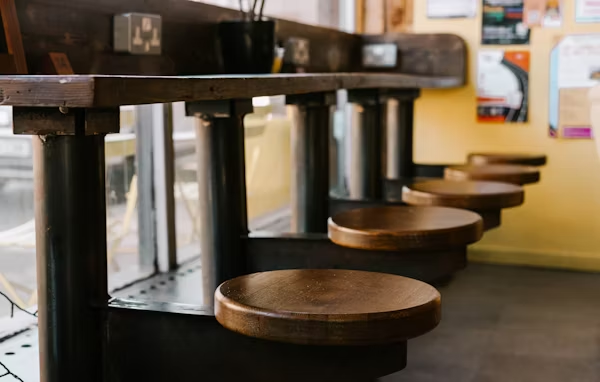
Incorporating Accessibility and Ergonomic Features
As our understanding of universal design deepens, creating spaces that accommodate everyone regardless of age or ability isn’t just thoughtful—it’s essential. Your shed conversion offers an excellent opportunity to incorporate accessibility features from the ground up, ensuring the space remains functional and welcoming for all users.
Entry and exit points require careful attention. A gentle ramp alongside steps provides options for wheelchair users, parents with prams, or anyone temporarily using mobility aids. Ensure doorways meet minimum width requirements (ideally 820mm clear opening) and consider installing lever-style door handles rather than round knobs, which prove difficult for people with limited grip strength or arthritis.
Inside the space, circulation pathways should remain clear and wide enough for comfortable navigation. A minimum of 1200mm turning circle allows wheelchair users to maneuver effectively. This doesn’t mean sacrificing style or functionality—thoughtful furniture placement achieves accessibility while maintaining aesthetic appeal.
Lighting becomes even more crucial in accessible design. Ensure switches are positioned at reachable heights (typically 900-1100mm from floor level) and consider motion-sensor lights that illuminate automatically when someone enters. Good lighting prevents trips and falls while making the space more welcoming for visitors with vision impairments.
If your converted shed includes workspace elements, seating flexibility matters tremendously. Standard chairs work for some users, but others benefit from adjustability features. Taking the time to shop adjustable chairs for disabled individuals or anyone dealing with back pain, mobility challenges, or comfort requirements pays dividends in usability. Height adjustment allows proper desk ergonomics regardless of user stature, while supportive features like lumbar adjustment and armrests reduce strain during extended sitting.
Adjustable furniture benefits everyone, not only those with specific accessibility needs. Someone might prefer different chair heights for various activities—lower for relaxed reading, higher for working at a standing desk converter. The flexibility adapts to changing needs rather than forcing users to adapt to fixed furniture.
Consider surface heights throughout your shed. Counters, shelving, and work surfaces positioned at varying heights accommodate different users and activities. Some items you’ll want at standing height, others at comfortable seated access level. Wall-mounted adjustable shelving systems offer flexibility to modify as needs change over time.
Flooring choices impact accessibility significantly. Smooth, level surfaces without transitions or thick carpet edges allow easy wheelchair navigation while reducing trip hazards. If you’ve chosen area rugs for warmth or definition, secure them properly with non-slip underlays or double-sided tape.
Storage accessibility deserves attention too. Open shelving at reachable heights beats high cabinets requiring step stools. Drawer pulls and cabinet handles should be easy to grasp—D-shaped pulls generally work better than small round knobs. Consider installing pull-out shelving in lower cabinets to eliminate the need for bending and reaching into deep spaces.
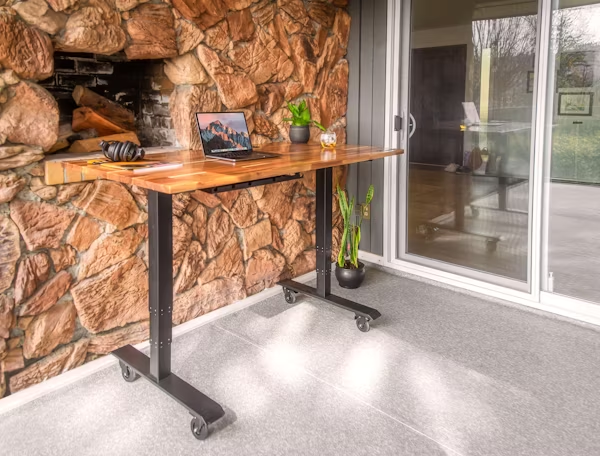
Maximizing Natural Light and Ventilation
Even the most beautifully furnished shed falls short if it feels dark, stuffy, or disconnected from the outdoors. Natural light and proper airflow transform spaces psychologically and practically, making them places where people genuinely want to spend time.
Window placement strategy goes beyond simply installing glass where it fits. Consider sun orientation—north-facing windows in the southern hemisphere provide consistent natural light without the harsh heat of western sun exposure. East-facing windows capture gentle morning light, while southern windows deliver cooler, indirect illumination.
If your shed’s structure limits window additions, explore alternative solutions. Skylights or solar tubes introduce overhead natural light that can dramatically brighten spaces without compromising wall area needed for furniture or storage. Modern skylight designs include rain sensors that automatically close during weather events and sun tunnels that direct light into darker interior zones.
Window treatments balance natural light with privacy and temperature control. Sheer curtains diffuse harsh sunlight while maintaining brightness. Cellular or honeycomb blinds provide excellent insulation, helping regulate temperature while still allowing light when raised. Exterior awnings or shade sails reduce heat gain during summer months, keeping your converted shed comfortable without over-relying on air conditioning.
Cross-ventilation proves essential in shed conversions, particularly in warmer climates. Position windows or vents on opposite walls to create air flow that naturally regulates temperature. Even when running air conditioning, good ventilation reduces stuffiness and prevents moisture buildup that could lead to mold issues.
Ceiling fans deserve consideration in virtually every shed conversion. Their energy efficiency, relatively low cost, and dual-season utility make them excellent investments.
In summer, fans create cooling breezes; in winter, running them slowly in reverse helps distribute warm air that naturally rises to ceiling level.
Consider how outdoor connections enhance your shed’s appeal. French doors or sliding glass doors blur boundaries between interior and exterior, making the space feel larger while providing excellent natural light. If your shed opens to a deck or patio area, this connection extends your usable square footage and creates seamless flow for entertaining.
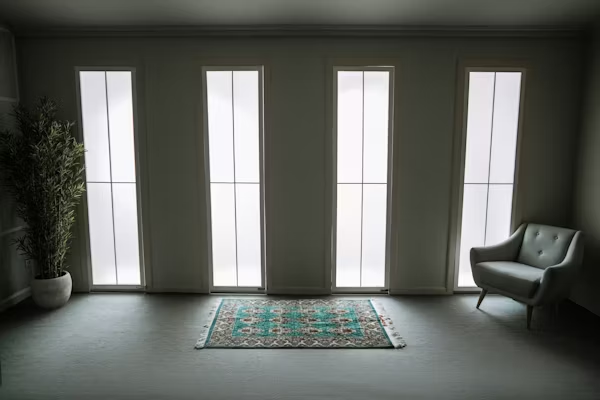
Bringing Your Shed Conversion Vision to Life
Transforming a backyard shed from storage space into a functional, beautiful retreat represents more than just a home improvement project—it’s an investment in lifestyle quality. Whether you’ve created a private guest suite, productive home office, entertaining space, or combination thereof, your converted shed expands your home’s possibilities without the complexity and expense of traditional additions.
Budget consciousness doesn’t mean compromising on quality or comfort. Strategic shopping for key furniture pieces, DIY approaches to certain projects, and phased implementation allow you to create impressive results without financial strain. Many of the most charming shed conversions incorporate repurposed, vintage, or budget-friendly elements alongside a few quality investments—proving that creativity and vision matter more than unlimited budgets.
As you enjoy your newly converted space, you might find yourself already dreaming about future enhancements. That’s part of the joy of these projects—they grow and change alongside your needs and creativity, continually offering opportunities for improvement and personalization. Your backyard shed has proven it’s far more than a storage solution. It’s a canvas for possibility, limited only by imagination and willingness to take on the challenge of transformation.






